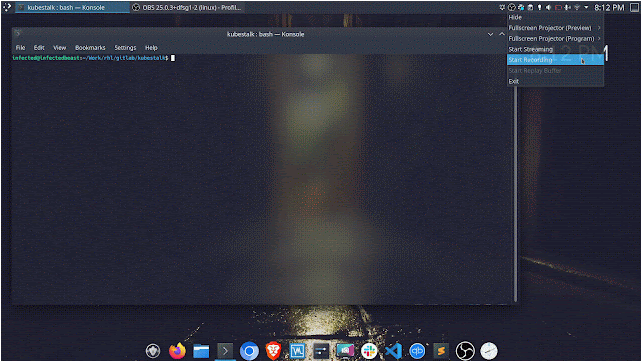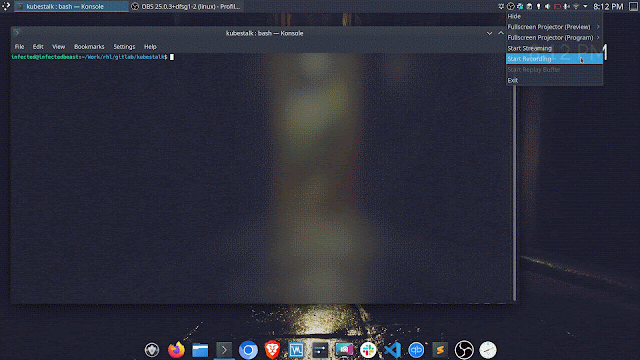KubeStalk – Discovers Kubernetes And Related Infrastructure Based Attack Surface From A Black-Box Perspective
KubeStalk is a tool to discover Kubernetes and related infrastructure based attack surface from a black-box perspective. This tool is a community version of the tool used to probe for unsecured Kubernetes clusters around the internet during Project Resonance – Wave 9.
Usage
The GIF below demonstrates usage of the tool:
Installation
KubeStalk is written in Python and requires the requests library.
To install the tool, you can clone the repository to any directory:
git clone https://github.com/redhuntlabs/kubestalk
Once cloned, you need to install the requests library using python3 -m pip install requests or:
python3 -m pip install -r requirements.txt
Everything is setup and you can use the tool directly.
Command-line Arguments
A list of command line arguments supported by the tool can be displayed using the -h flag.
To use the tool, you can pass one or more hosts to the script. All targets passed to the tool must be RFC 3986 complaint, i.e. must contain a scheme and hostname (and port if required).
A basic usage is as below:
$ python3 kubestalk.py https://███.██.██.███:10250
+---------------------+
| K U B E S T A L K |
+---------------------+ v0.1
[!] KubeStalk by RedHunt Labs - A Modern Attack Surface (ASM) Management Company
[!] Author: 0xInfection (RHL Research Team)
[!] Continuously Track Your Attack Surface using https://redhuntlabs.com/nvadr.
[+] Loaded 10 signatures to scan.
[*] Processing host: https://███.██.██.██:10250
[!] Found potential issue on https://███.██.██.██:10250: Kubernetes Pod List Exposure
[*] Writing results to output file.
[+] Done.
HTTP Tuning
HTTP requests can be fine-tuned using the -t (to mention HTTP timeouts), -ua (to specify custom user agents) and the --verify-ssl (to validate SSL certificates while making requests).
Concurrency
You can control the number of hosts to scan simultanously using the --concurrency flag. The default value is set to 5.
Output
The output is written to a CSV filea and can be controlled by the --output flag.
A sample of the CSV output rendered in markdown is as belows:
| host | path | issue | type | severity |
|---|---|---|---|---|
https://█.█.█.█:10250 | /pods | Kubernetes Pod List Exposure | core-component | vulnerability/misconfiguration |
https://█.█.█.█:443 | /api/v1/pods | Kubernetes Pod List Exposure | core-component | vulnerability/misconfiguration |
http://█.█.██.█:80 | / | etcd Viewer Dashboard Exposure | add-on | vulnerability/exposure |
http://██.██.█.█:80 | / | cAdvisor Metrics Web UI Dashboard Exposure | add-on | vulnerability/exposure |
Version & License
The tool is licensed under the BSD 3 Clause License and is currently at v0.1.
To know more about our Attack Surface Management platform, check out NVADR.
A considerable amount of time and effort goes into maintaining this website, creating backend automation and creating new features and content for you to make actionable intelligence decisions. Everyone that supports the site helps enable new functionality.
If you like the site, please support us on “Patreon” or “Buy Me A Coffee” using the buttons below


To keep up to date follow us on the below channels.







![[QILIN] - Ransomware Victim: upea[.]com 9 image](https://www.redpacketsecurity.com/wp-content/uploads/2024/09/image-300x300.png)
![Cobalt Strike Beacon Detected - 160[.]202[.]247[.]245:443 12 Cobalt-Strike](https://www.redpacketsecurity.com/wp-content/uploads/2021/11/Cobalt-Strike-300x201.jpg)
